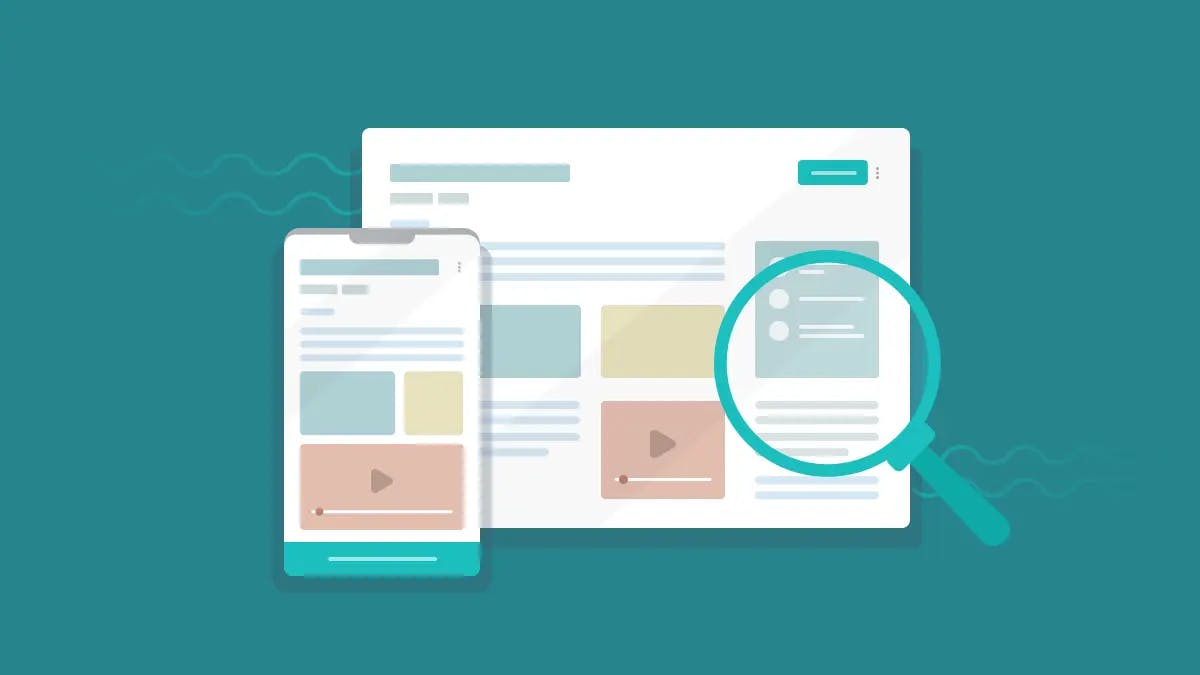If you are starting a new website, or want to make some changes to your existing one, then the topic of on-page SEO is something you should be thinking about. It can seem like a daunting task when you first start. However, it's not that hard with the proper knowledge and tools. This blog post will cover the basics of on-page SEO for beginners and give you a few tips to get started.
What is On-Page SEO?
On-page optimization refers to all activities involved in improving your site's rankings in search engine results pages (SERPs) by increasing the relevance of their content. These efforts aim to achieve a high-ranking position on the search results page. That usually means that more traffic will be driven to your website as more searchers click on your listing and improve your website rankings.
Why do we need it?
For an SEO campaign to have any impact on your site's rankings and organic search performance, you must begin with on-page optimization. This is because search engines use the content of your website's pages to determine how relevant they are to specific keywords or keyword phrases and whether they should be ranked high in their SERPs for those words.
Differences between on-page and off-page optimization
On-page and Off-Page SEO optimization are two different things but work together to improve your site's rankings. On-Page refers to all changes made on a webpage that will result in higher website SEO. This includes keyword management, copywriting, fixing website errors such as broken links or coding problems, etc. In contrast, Off-Page SEO refers to all activities outside the web page, such as social media marketing, to get more backlinks.
SEO elements:
1. Page Titles
Page titles refer to the text that appears in a webpage's tab and at the top of your browser. They are essential for both on-page SEO and off-page SEO because they tell search engines what your site is about, which makes them an integral part of keyword research. Page titles are the first thing people see when landing on your page. Optimizing them is very important because it will help search engines understand what your post or webpage is about. Search engine bots crawl through your HTML head tags and read these title tags, then use that information to determine which words you should be ranking for in their SERPs. When writing page titles, you must avoid keyword stuffing and focus on creating a catchy title. That will make users want to click through to your site.
2. Headers
Headers refer to the headings you see on a webpage. They are usually located between H tags (Header tags). While these can be used for off-page optimization, headers are used by search engines to determine what your site is about and how relevant it is for specific keywords. By having the keyword in headers, you can give Google more information on what each section of your post or page contains, which will improve its relevancy score. People also use them to determine what your post is about, so you must use them correctly. It would be best if you used H tags to separate different sections of your post and include the keyword at least once in each header to optimize headings. However, it is essential not to overuse keywords in your headers because this can be seen as keyword stuffing.
3. Meta descriptions
Meta descriptions are the short summaries of your webpage that appear in search engine results pages. These tell people what they can expect to see when clicking on your link, and as such, should be used as a way to entice them. A meta description is not visible within the body of a post or page but instead in the search engine results page. It is also important to remember that these descriptions will influence whether or not users click on your link. They play a role in off-page SEO by influencing user experience and engagement with said content. To optimize meta descriptions, you need to include your target keyword once within it while ensuring it is still natural and easy to read.
4. Image Alt - texts
Image alt-text is the text that appears when an image cannot load properly. These are important because search engine bots use them to understand what a webpage's content contains, and in turn, how relevant it should be for specific keywords or key phrases. They can also be used in off-page optimization by including your target keywords within the alt-text. This will help improve their relevancy score and increase your chances of ranking for that keyword or phrase. To optimize image alt texts, you need to use a relevant but natural description of each picture on your site while still ensuring it is not overly keyword-stuffed.
5. Page URLs
Page URLs refer to the URL of a webpage. They are usually very similar in structure. While they can be used for off-page optimization by including keywords at the end or beginning of your URL, they play an important role within on-page SEO as well. Search engines consider their content when ranking pages because it provides further information on what the page is about. They also consider whether or not they can crawl your URL correctly and any redirects in place that will make it difficult to index your site correctly. To optimize URLs, you need to use relevant keywords within them without keyword stuffing. You should avoid using special characters such as hyphens when possible because they can make the URL harder to crawl. You should also avoid using session-identifiers or dynamic parameters within your URLs. They can break a user's journey through your site and complicate crawling efforts for search engines.
6. Quality On-Page Content
The quality of your on-page content is another crucial factor that search engines consider when ranking pages for specific keywords or key phrases. High-quality, engaging content will help you rank higher in the SERPs. It provides more relevant information to users and makes them more likely to engage with it by clicking through to your site. It can also improve your site's overall engagement metrics. That will, in turn, influence how it is ranked for certain keywords or key phrases. To optimize quality on-page content, you need to ensure that the information provided by each page of your website is accurate and relevant to provide value to users when they engage with it. It would help if you also used descriptive but natural language to describe your products and services, as well as the benefits each one has for users.
7. Mobile Responsiveness
Mobile responsiveness refers to a web page's ability to adjust and reformat itself based on the device it is being viewed through. This can help improve both user experience and engagement and your rankings within mobile search results. How many people click through from those search engine listings to your site will influence the latter. To optimize your mobile responsiveness, you need to ensure that each page of your site is responsive. It should also include the appropriate meta tags such as viewport, apple-mobile-web-app-capable, etc. You should also use a descriptive file name for your images to load correctly on smaller devices and include relevant keywords in their alt text.
8. Site Speed
Site speed refers to how quickly web pages or assets load on a webpage for users. This is considered by search engines when ranking pages because it provides them with information about the quality of your site's content. In turn, whether they should rank it higher than others for certain keywords or key phrases. It can also influence user engagement metrics. That can affect how your site is ranked for certain keywords or key phrases. To optimize website speed, you need to ensure that each page loads quickly without any unnecessary content slowing it down and include relevant keywords in the title, meta description, etc. You should also compress images to load faster on web pages while maintaining their quality and ensuring that your site is hosted on a server with high uptime.
9. Internal Linking
Internal linking is another critical factor influencing how well your site ranks for specific keywords or key phrases. It helps search engines crawl through each page of your website by directing them to relevant pages within it. It also provides further information on what the content they contain is about. To optimize internal link structure, you need to ensure that every page on your site links to at least one other relevant page. In titles of those pages are relevant keywords or key phrases too. It would be best if you also used descriptive but natural language when linking from one page to another. It's better than generic anchor text such as "here," etc. In conclusion, on-page SEO is an essential factor influencing how well your site ranks for specific keywords or key phrases. It can also improve user experience and engagement metrics and influence other factors such as mobile responsiveness, etc. By using SEO tools to optimize their on-page SEO, SME businesses can help improve their rank trackings and attract more visitors to their site. Luckily, seobase offers a range of SEO tools that can help SMEs do just this.



